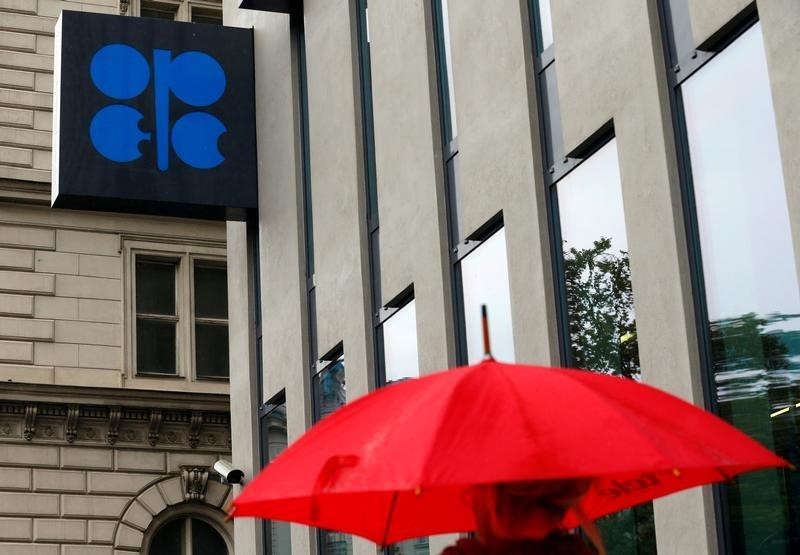By Scott DiSavino
NEW YORK (Reuters) – Oil prices fell to a near five-month low on Tuesday on a stronger U.S. dollar and demand concerns, sending the market down for a fourth straight day on doubts over OPEC+ announcing voluntary supply cuts last week .
“The OPEC+ deal has done little to support prices and given the four days of declines that followed, traders are clearly not very impressed,” said Craig Erlam, senior UK & EMEA market analyst, at data and analytics firm OANDA .
futures fell 83 cents, or 1.1%, to settle at $77.20 a barrel, while U.S. West Texas Intermediate crude (WTI) ended 72 cents, or 1.0%, lower at $72.32.
That was the lowest closing price for both crude oil benchmarks since July 6. For WTI, it was the first time since May that prices fell four days in a row.
The price falls came despite comments from Russian Deputy Prime Minister Alexander Novak that OPEC+ is ready to deepen oil production cuts in the first quarter of 2024 to eliminate “speculation and volatility” if existing measures to cut production were not enough .
OPEC+ groups the Organization of the Petroleum Exporting Countries and allies such as Russia.
On November 30, OPEC+ agreed to voluntary production cuts of about 2.2 million barrels per day (bpd) for the first quarter of 2024. But at least 1.3 million bpd of those cuts were an extension of the voluntary cuts that Saudi Arabia and Russia had already imposed. place.
“The voluntary element of the deal left markets wondering whether the supply reduction would actually take effect,” said Fiona Cincotta, financial market analyst at US financial services firm StoneX.
Remove ads
.
The Kremlin said OPEC+ production cuts will take some time. President Vladimir Putin will visit OPEC members the United Arab Emirates and Saudi Arabia on Wednesday and receive Iranian President Ebrahim Raisi in Moscow on Thursday.
Russian oil and gas revenues fell to 961.7 billion rubles ($10.53 billion) in November from 1.635 trillion rubles in the previous month due to the cyclical nature of profit-based tax payments.
Top oil exporter Saudi Arabia cut the price of its flagship Arab Light oil for Asian customers in January for the first time in seven months, responding to weakening premiums in the physical market amid concerns about a supply glut.
OPEC member Libya’s National Oil Corporation, meanwhile, said it is on track to grow oil production to 2 million barrels per day in the next three to five years.
In terms of US supply, oil and fuel inventories rose in the week to December 1, according to market sources citing figures from the American Petroleum Institute on Tuesday. The data caused oil prices to widen post-settlement losses.
Crude inventories rose by 594,000 barrels in the week ended December 1, the sources said on condition of anonymity. Gasoline inventories rose by 2.8 million barrels, while distillate inventories rose by almost 1.9 million barrels.
Figures from the US government on supplies will be released on Wednesday.
DEMAND CARE
In China, the world’s largest oil importer, major state-owned banks were busy buying the yuan to prevent it from weakening too much after rating agency Moody’s (NYSE:) downgraded its outlook for China to negative.
Elsewhere, countries at the COP28 climate conference are considering calling for a formal phase-out of fossil fuels as part of the United Nations’ final deal to tackle global warming.
Remove ads
.
The U.S. dollar rose to a two-week high against a basket of currencies after new employment data showed job openings fell to their lowest level since early 2021 in October.
The slowing labor market and declining inflation have increased optimism that the Federal Reserve is likely done raising interest rates this cycle, with financial markets anticipating a rate cut in mid-2024.
A stronger dollar could reduce demand for oil by making the fuel more expensive for buyers using other currencies.
Lower interest rates, meanwhile, could increase demand for oil by making it cheaper for consumers to borrow money to buy more goods and services.


